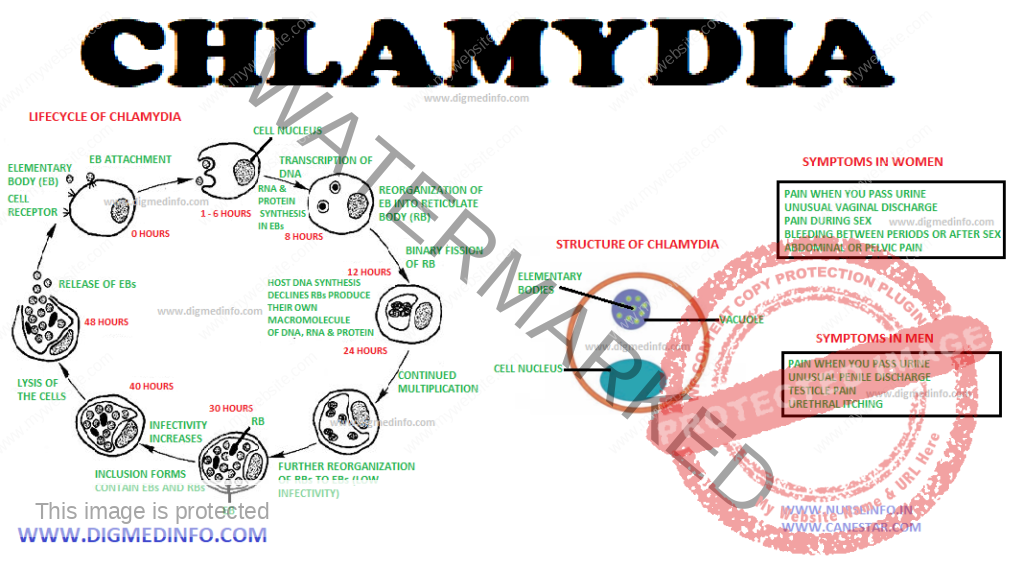CHLAMYDIA (Psittacosis/Parrot Fever) – General Characteristics, Life cycle, Definition, Epidemiology, Pathology, Clinical Features, Diagnosis, Treatment and Control
General Characteristics
Chlamydiae are small gram-ve organisms which remain intracellular. They have both DNA and RNA. They possess cell wall and divide by binary fission. They have a unique biphasic life cycle with dimorphic forms which are functionally and morphologically distinct.
Life Cycle
The elementary body (EB) is an infectious but metabolically inactive form which attaches to the epithelial cell surface and enters the cell by endocytosis. Once endocytosed it differentiates into a larger pleomorphic form called reticular body (RB) and remains inside a membrane bound vacuole thereby evading phagolysosomal fusion.
Once inside the cell they interrupt the metabolic processes of the host cells and utilize them for their own metabolism and replication. These processes are not yet fully understood. Antigenically they are complex, possessing antigens of genus, species and serotype specificity. The human pathogens include the species Chlamydia trachomatis, Ch. pneumoniae and Ch. psittaci.
PSITTACOSIS (PARROT FEVER)
Definition
Psittacosis is an infectious disease caused by the organism Chlamydia psittaci which is a primary pathogen of birds. Chlamydia psittaci is a gram-negative obligate intracellular parasite.
Epidemiology
The disease is present all over the world. Psittacine birds (parrots, parakeets, cockattoos) are commonly affected, but all types of birds may suffer. Infection in man results from close contact with birds. The organism is present in the feces of infected birds. Humans acquire the infection by inhalation of bird’s feces or handling the tissues of infected birds.
Pathology
Chlamydia psittaci reaches the pulmonary alveoli and the reticuloendothelial cells of the spleen and the liver. In the lung patchy consolidation develops. Liver and spleen are enlarged due to congestion. The heart, meninges, and the brain also show congestion. The alveolar exudate is mainly mononuclear.
Clinical Features
The average incubation period is about ten days. The onset is sudden with fever, malaise, sore throat, and intense photophobia. Temperature ranges from 37-39°C. There is relative bradycardia. Tachypnea may occur. There may be cough with scanty mucopurulent sputum. Signs of pulmonary consolidation may be evident. After about 10 days of fever the temperature comes down by lysis. Mortality may reach 20%. Respiratory failure and toxemia are the usual causes of death.
Diagnosis
Psittacosis has to be differentiated from viral pneumonia, typhoid fever, influenza and Q fever. History of contact with birds is the most helpful clue to diagnosis. In the first few days of the illness the organisms can be isolated from the sputum and blood by inoculation into mice or into the yolk sac of embryonated eggs or into irradiated cell cultures. Diagnosis can be established by demonstrating antibodies by ELISA or microimmunofluorescence.
Treatment
Tetracycline is very effective. It is given in a dose of 4 g/day for 2 days and then 2 g daily till recovery is complete. Doxycycline 100 po bd up to 3 weeks is a convenient alternative.
Control
Quarantine of birds imported from other countries should be insisted upon and the infected birds should be killed. Carrier state among the birds is reduced by incorporating tetracycline in bird feeds


